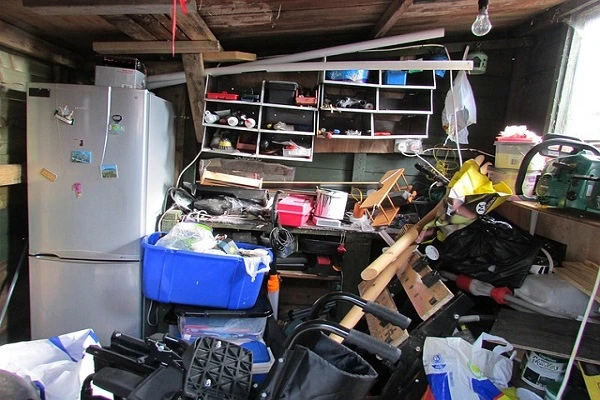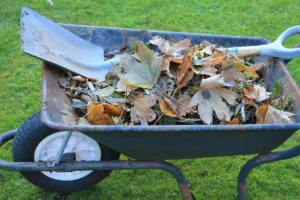If you live in a rental apartment, it doesn’t mean you have to give up on having a thriving indoor garden. You just need to be a little more strategic about it. That’s where stacking gardens come in — a smart, space-saving solution that keeps your landlord happy too.
Stacking your plants vertically lets you grow more without cluttering your floors or drilling into walls. It’s one of the easiest ways to turn even the tiniest corner into a productive green space. Plus, you’ll avoid the stress of major setups that could cost you your security deposit.
Today, we’re going beyond the basics. If you already understand how vertical growing works, it’s time to fine-tune your setup. A few small upgrades can make a huge difference in how well your stacked garden performs, especially over long stretches of the year.
We’re diving into practical tips that will help you build smarter, not harder. Whether you want a constant supply of greens for your salads or a steady stream of kitchen herbs, a well-planned stacking system can deliver without the mess and hassle.
Ready to maximize your vertical garden without risking your lease? Let’s take it to the next level with simple tricks that really work.
Renter-Proof Stacking: Smart Material Choices
When you’re stacking gardens in a rental, your material choices can make or break the whole setup. You want something strong enough to hold your plants but light enough to move without a struggle. Plus, it needs to leave no trace when you move out.
Start with lightweight, durable materials like PVC, aluminum, or recycled plastics. These options are tough, moisture-resistant, and won’t buckle under the weight of pots or hydroponic systems. They’re also easy to clean and won’t corrode over time.
PVC pipes are especially great because they’re cheap, customizable, and snap together without tools. If you need something sleeker, aluminum shelves are sturdy without being heavy. Recycled plastic crates are also a flexible, eco-friendly choice that won’t stress your floors.
Stick to modular systems whenever possible. Think stackable crates, free-standing shelves, or tension-mounted frames. These options can be built up, taken down, or rearranged without needing a single drill or nail.
If you ever plan to move — and let’s face it, most renters do — modular setups will save you major headaches. Just pack them flat or carry them out with zero wall damage or floor dents. Your landlord won’t even notice you had a garden.
Mini-Pro Tip
Materials that LOOK good and FEEL sturdy — your landlord will thank you. Stylish setups using polished metal or crisp white plastics blend better with modern interiors too.
Bonus
Good materials not only protect your apartment but also make tending your plants easier. Sturdy shelving means less wobble, fewer spills, and a healthier environment for whatever you’re growing.
Choosing the right framework now means you’ll spend more time harvesting greens and less time fixing collapsing shelves. Invest smartly upfront, and your stacking garden will serve you well through every growing cycle.
Anchoring Without Damage: Stability Hacks
Keeping a stacking garden stable in a rental can feel tricky, but it’s easier than you think. You don’t need drills, nails, or anything that might upset your lease agreement. Just a few smart tools can lock everything into place — safely and neatly.
Tension rods and pressure-mounted poles are perfect for vertical builds. They fit snugly between your floor and ceiling without leaving any marks. You can adjust them to the exact height you need, making them super flexible for different spaces.
If you’re stacking shelves or crates, anti-slip mats are your new best friend. They create extra friction between surfaces, helping prevent any shifting or sliding. Bonus: they also protect your floors from scratches and dents.
Adhesive pads are another simple but powerful trick. Stick them under your bases or on shelving corners to give your setup more grip. They’re easy to remove later and won’t leave sticky residue behind.
For added security, zip ties and Velcro straps work wonders. Use them to connect crates, shelves, or even pots together without a single hole drilled. Velcro is especially handy because you can easily adjust or remove it whenever you want to rearrange things.
Best No-Drill Stability Solutions:
- Tension rods for vertical support
- Anti-slip mats under stacks
- Adhesive pads on shelving bases
- Zip ties for locking elements together
- Velcro straps for adjustable binding
The goal is to create a structure that feels solid but still respects your rental space. A garden that stands tall and secure without leaving a trace is the sweet spot for any apartment dweller.
A little extra attention to stability also means fewer accidents — no tipping plants, no spilled water, and no headaches during harvest time. Work smart, and your indoor garden will stay as steady as it is beautiful.
Water Management: No-Flood Gardening Indoors
One of the biggest challenges with indoor stacking gardens isn’t getting things to grow — it’s managing water without making a mess. A little planning goes a long way in keeping your floors dry and your landlord happy.
The first line of defense is catch trays. Placing them under every pot or shelf layer will catch excess drips before they reach the floor. Shallow waterproof bins work even better for bigger gardens, offering wide coverage without adding too much weight.
If you want extra security, add a layer of protection under your whole garden. Silicone mats are flexible, easy to clean, and trap stray water before it can spread. For larger setups, plastic liners or even shower curtains trimmed to size do the trick.
DIY drip containment doesn’t have to look ugly either. You can cut silicone mats to match your shelving size, making everything look intentional and clean. Plus, it’s a lot easier to replace a liner than fix water-damaged floors.
When it comes to watering, control is everything. Wicking systems deliver moisture slowly and evenly, cutting down the risk of accidental flooding. They’re especially helpful if you’re stacking multiple levels and want consistent moisture without heavy runoff.
Automatic watering timers are another smart addition. Set them to release small amounts at specific intervals instead of dumping a full watering can at once. It keeps your plants happier and your apartment safer.
Tip highlight
Always think two spills ahead! Assume water will escape at some point and set up barriers early. It’s easier to prevent a flood than clean up after one.
Good water management means your garden stays thriving and your living space stays spotless. With the right setup, you can enjoy lush greenery without a single panic over leaks.
Optimizing Light for Stacked Gardens
Light is the lifeblood of any garden, and when you’re stacking plants indoors, smart lighting makes all the difference. Without the right setup, even the most beautiful vertical garden can struggle. Luckily, a few simple tricks will keep your plants thriving at every level.
Clip-on grow lights are a game-changer for tight spaces. They’re flexible, easy to move, and let you direct light exactly where it’s needed. For broader coverage, slim bar LEDs can be mounted under shelves or across the top of your garden.
Think vertically when planning your plant layout. High-light lovers, like tomatoes and peppers, should sit higher up where they can soak in the most brightness. Shade-tolerant greens, like spinach or mint, can happily grow closer to the bottom shelves.
If you’re lucky enough to have a sunny window, use it to your advantage. Place your garden so the tallest plants don’t block the light from reaching lower ones. Stack in a way that lets every level catch some natural rays throughout the day.
Of course, most apartments don’t get consistent sunshine year-round. That’s where artificial lighting steps in to fill the gaps. Grow lights mimic the sun’s spectrum, giving your plants the fuel they need even on gloomy days.
Pro Tip
Mix natural and artificial light for energy savings. Let the sun do the heavy lifting during the day, and only supplement with grow lights when needed. Your utility bill (and your plants) will thank you.
Good lighting isn’t just about plant survival — it’s about boosting growth, color, and even flavor. With the right balance, your stacked garden can stay vibrant, productive, and beautiful, no matter how small your apartment may be.
Best Plants for Vertical Stacking Success
When selecting plants for your vertical garden, focus on compact, fast-growing varieties. These are ideal for stacking, as they don’t need tons of space or time to thrive. Plus, they’re easy to manage, even in smaller setups.
Herbs are a fantastic choice. Basil, cilantro, and mint grow quickly and require little attention. Their compact nature makes them perfect for top or middle shelves in your garden. You’ll have a steady supply for cooking or teas in no time.
Leafy greens like lettuce, arugula, and spinach also do well in vertical gardens. They grow fast, don’t need a lot of light, and fit easily into small containers. These are perfect for a garden that’s all about maximizing space.
Dwarf varieties are another great option. Mini peppers or small strawberry plants are ideal for stacking systems. These compact plants won’t overwhelm your garden or outgrow their space. They’re also a fun way to grow fruit or vegetables indoors.
Avoid heavy-rooted or top-heavy plants that can topple over. Plants like tomatoes or large squash need deep roots and extra support, which might not work well in a vertical garden.
Mini Plant Shortlist:
- Basil, cilantro, mint (herbs)
- Lettuce, arugula, spinach (leafy greens)
- Mini peppers, dwarf strawberries (compact fruit/veggies)
Choosing the right plants ensures your stacked garden grows smoothly and looks great. Stick with compact options, and you’ll be well on your way to vertical gardening success.
Bottom Line
Stacking gardens in rental spaces doesn’t have to be complicated. When you combine the right materials, clever water control, and thoughtful lighting, you create a system that works for you — not against you. And most importantly, you keep your apartment damage-free.
Choosing lightweight, durable structures means your garden stays easy to move and easy to manage. Smart water management keeps your floors dry and your plants happy. Add in well-placed lighting, and you’ve got a setup that thrives no matter the weather outside.
The goal isn’t to make things harder. It’s about working with your space, not fighting it. Small tweaks can transform a cramped corner into a productive, green haven without the stress.
So stack smarter, not harder. Build a garden that fits your lifestyle, respects your rental, and keeps your indoor oasis growing strong — season after season.




